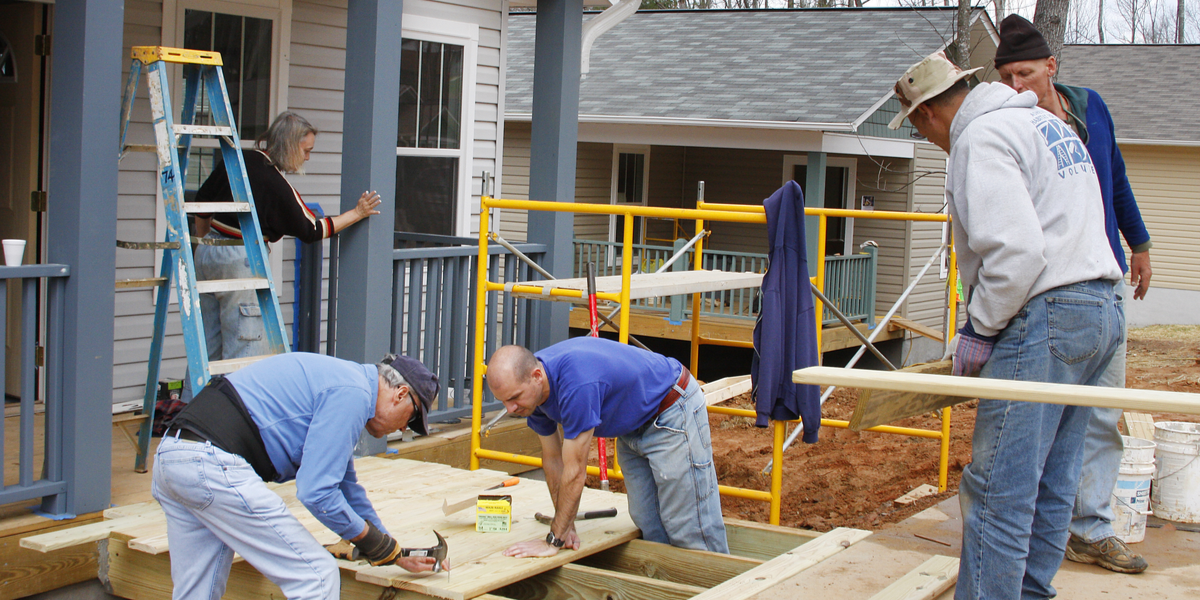Congress is shaking up this program that makes low-income housing more livable
Let's Save Energy
Alliance to Save Energy's Blog

Last month, the Senate passed the Infrastructure Investment and Jobs Act, a landmark bipartisan effort to invest in cleaner, more resilient infrastructure across the United States. Of special importance in the package is the Weatherization Assistance Program (WAP), where the Senate approved $3.5 billion to boost energy efficiency access for low-income individuals and families. But Congress wasn’t done with WAP yet: last week, the House Committee on Energy and Commerce (E&C) joined the Senate’s lead and approved an additional $3.5 billion for WAP under the Build Back Better Act – the budget reconciliation package that Democrats hope to pass alongside the bipartisan infrastructure package – effectively doubling the earlier action.
Should the Senate and House numbers hold, this would be a long overdue $7 billion investment in universal access to energy efficiency’s benefits, helping the low-income families with the highest energy burdens to improve their homes’ insulation, repair and replace HVAC and water heating systems, install LED lighting, and implement other essential weatherization, health, and safety measures.
What is the Weatherization Assistance Program?
WAP was created in 1976 in response to the U.S. energy crisis, when an oil embargo led to fuel shortages and rocket-high fuel prices. The program was designed to help low-income families reduce their home heating use, with an initial appropriation of $26 million. Today, as part of the U.S. Department of Energy (DOE) Office of Energy Efficiency and Renewable Energy (EERE), WAP reduces energy costs for households that fall below an income threshold by providing them with funding for energy efficiency improvements – including minor structural repairs that improve health and safety.
In 2020, with an appropriation of only $310 million, WAP provided weatherization services to about 35,000 homes – reducing annual CO2 emissions by more than 2 million metric tons and saving each participating household an average of $283 on energy bills per year. Because one of WAP’s biggest hurdles has always been limited funding, the funding proposals in the Senate and House will allow the program to better fulfill its potential to reach more low-income communities. Combined, the proposed allocations would more than double FY21 levels, providing $700 million a year over 10 years. With an existing mile-long waitlist for income-eligible households to join, this means more families would be able to save more energy and more money – while also lowering carbon emissions and creating jobs.
Why Weatherization Matters
Weatherization returns $1.72 in energy benefits for every $1 invested in the program. These savings are especially important for low-income households who carry a larger energy cost burden, typically spending 13.9% of their total annual income on energy costs versus 3% for other households. Because they must spend more just to keep the lights on, families are often faced with the choice to “heat or eat,” cutting back on health care, medicine, groceries, and childcare to pay energy bills. Weatherization helps alleviate this heavy energy burden through cost-effective building shell improvements such as insulation and air sealing, and through upgrades to HVAC, lighting, and appliances. Once installed, energy-efficient measures continue to save money and energy year after year, so limited household funds can go toward other key living expenses.
Beyond the scope of energy savings, WAP improves health and safety. Weatherization can make homes more livable and improves indoor air quality, which results in fewer missed days of work (e.g., due to sick days and doctor visits) and decreased out-of-pocket medical expenses by an average of $514. The total health and household-related benefits for each weatherization averages $14,148.
Leveraging funding through states and utilities
The amount of funding appropriated to WAP directly affects the number of homes the program can improve. Fortunately, there are also incentives for states, communities, and utilities to drive supplemental funding, leveraging the value of available investments to the tune of $860 million, or $3.48 for every DOE dollar invested. With the robust funding proposed in the bipartisan infrastructure package and the reconciliation bill, leveraging opportunities can be maximized, ultimately accelerating the deployment of equitable home retrofits throughout the nation.
The future of equity in energy efficiency
The economic impact of the pandemic on low-income families coupled with the climate crisis makes clear the need to accelerate our energy efficiency and weatherization efforts. The new funding and leveraging opportunities under consideration in Congress today would do just that – allowing WAP to continue growing and delivering thousands of weatherization services to low-income households nationwide, and living up to its DOE nickname as the “Longest Running and Perhaps Most Successful U.S. Energy Efficiency Program.”
RECENT BLOG POSTS
STAY EMPOWERED
Help the Alliance advocate for policies to use energy more efficiently – supporting job creation, reduced emissions, and lower costs. Contact your member of Congress.
Energy efficiency is smart, nonpartisan, and practical. So are we. Our strength comes from an unparalleled group of Alliance Associates working collaboratively under the Alliance umbrella to pave the way for energy efficiency gains.
The power of efficiency is in your hands. Supporting the Alliance means supporting a vision for using energy more productively to achieve economic growth, a cleaner environment, and greater energy security, affordability, and reliability.



